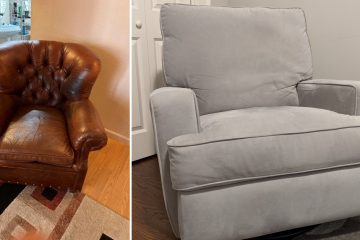Are your dining chairs in need of a makeover? Reupholstering them is a great way to give them a fresh, new look without breaking the bank. In this comprehensive guide, we will walk you through the process of how to reupholster a chair seat with rounded corners. Whether you’re a beginner or have some experience with upholstery, you’ll find helpful tips and tricks to achieve professional results.
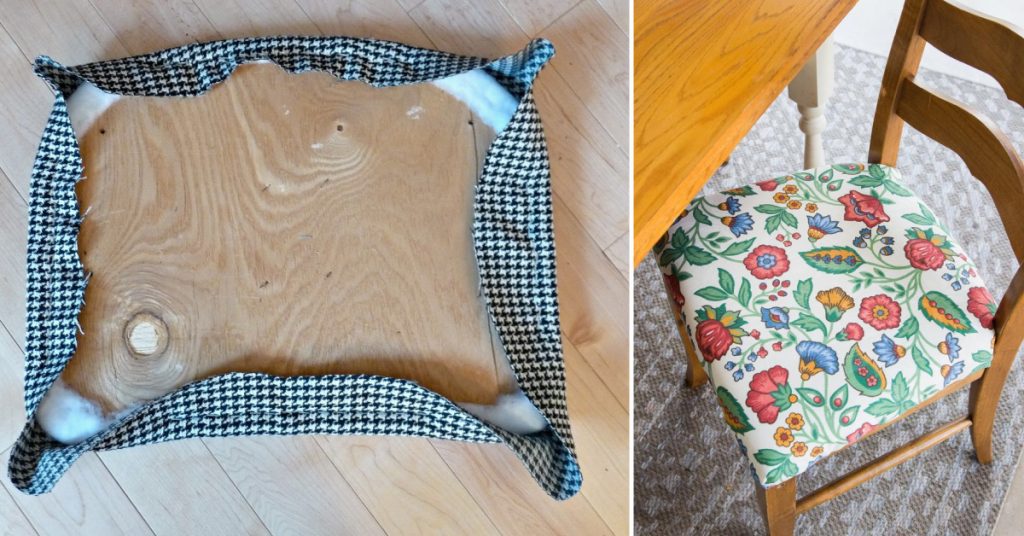
Why Reupholstering Dining Chairs is a Great DIY Project
Reupholstering dining chairs is a simple and rewarding DIY task, even for beginners. It allows you to update the look of your chairs without the expense of buying new ones. With just a staple gun and some fabric, you can transform your dining chairs and add a personalized touch to your home decor. Whether you want to create a cohesive look or add a pop of color, reupholstering is a cost-effective way to achieve your desired aesthetic.
Benefits of Reupholstering Dining Chairs
Reupholstering your dining chairs offers several advantages. Firstly, it allows you to customize the cushions with any pattern or fabric you like, giving you endless design possibilities. Secondly, it helps extend your chairs’ lifespan by replacing worn-out or damaged fabric. Lastly, reupholstering is an environmentally friendly choice as it reduces waste by repurposing existing furniture.
10 Easy Steps for How to Reupholster a Chair Seat With Rounded Corners
Here are 10 easy steps for how to reupholster a chair seat with rounded corners:
Step 1: Gathering the Necessary Supplies
Before you begin the re-upholstering process, it’s important to gather all the supplies you’ll need. Here are the essential items:
- Upholstery fabric: Choose a durable fabric specifically designed for upholstery. Consider the style and color that will complement your dining room decor.
- Quilter’s batting and/or upholstery foam: The amount you need will depend on the size and number of your chairs. Quilter’s batting helps maintain a flat look, while upholstery foam provides extra cushioning.
- Staple gun: Invest in a high-quality staple gun that securely attaches the fabric to the chair.
- 8mm staples: These staples are commonly used for upholstery projects.
- Pliers: You’ll need pliers to remove any old staples or fabric.
- Screwdriver: Depending on the type of chair, you may need a screwdriver to detach the seat from the frame.
- Patient set of second hands: Having an extra set of hands can be helpful during the upholstery process.

Step 2: Preparing the Chairs for Reupholstering
2.1 Removing the Chair Seat
To start the re-upholstering process, you’ll need to remove the chair seat from the frame. Follow these steps:
- Turn the chair upside down.
- Use a drill or screwdriver to unscrew the seat from the frame.
- Keep the screws in a safe place for reassembly later.
2.2 Preparing the Chair Frame
Before reattaching the seat, take the time to inspect and prepare the chair frame:
- Check for any necessary repairs, such as loose or wobbly joints. Tighten or reinforce them as needed.
- If desired, paint or refinish the wood part of the chair. Ensure that everything is dry and not sticky before proceeding.
Step 3: Removing the Old Fabric
Follow these steps:
- Turn the seat over to access the old fabric.
- Use a staple remover to remove the old staples. If they are difficult to remove, needle-nose pliers can help.
- Save the old seat fabric as a pattern for the new fabric.
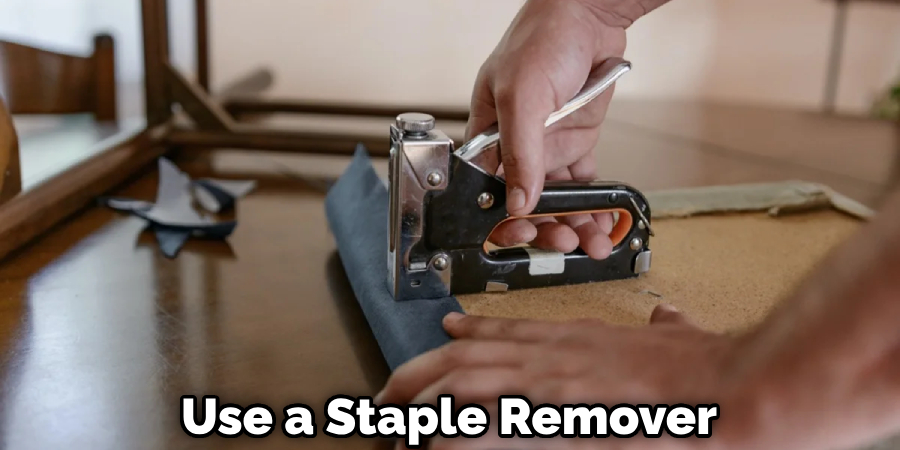
Step 4: Assessing the Padding
Inspect the padding of the chair seat. If it is in good condition, you can proceed to Section 6. If the padding is worn out or you prefer a softer seat, follow these steps:
- Cut a piece of upholstery batting or foam slightly larger than the seat area.
- Attach the batting or foam to one end of the seat with a staple gun.
- Wrap it tightly around the cushion, pulling it taut.
- Staple it to the opposite end of the seat, ensuring it is smooth and secure.
Step 5: Selecting and Centering the New Fabric
Choosing the right fabric is crucial for achieving the desired look and durability. Consider upholstery-grade fabric that can withstand regular use. Here’s how to center the fabric on the seat:
- Place the new fabric right-side down on a flat surface.
- Position the old seat fabric on top of it to serve as a pattern.
- Adjust the fabric to ensure the pattern is centered and aligned with the corners of the seat.
- Use straight pins to mark the corners of the seat fabric for reference.

Step 6: Cutting and Attach the New Seat Cover
Follow these steps:
- Flip the new fabric over, exposing the right side.
- Place the old seat cover on top of it, aligning the corner creases with the marked corners.
- Trace around the old seat cover with a pencil or chalk, smoothing the edges as you go.
- Cut out the new seat cover along the traced lines, ensuring clean and straight edges.
- To prevent fraying, you can use a sewing machine to zigzag or serge around the edges. Alternatively, fold tape along the edges and secure it with fabric glue.
- Remove any wrinkles or creases by ironing the fabric in a low heat setting.
Step 7: Upholstering the Chair Seat
Now it’s time to attach the new fabric to the chair seat. Follow these steps for a smooth and secure upholstery:
- Turn the seat cover fabric right-side down.
- Place the seat cushion, also right-side down, on top of the fabric.
- Ensure that the marked corners on the fabric align with the corners of the seat cushion.
- Start stapling the fabric to the seat, beginning with the top edge. Staple once in the center and repeat with the bottom edge, pulling the fabric tight.
- Staple each side of the seat, working from the center outward. Ensure the fabric remains taut and smooth as you staple.
- Leave the corners unstapled for now.
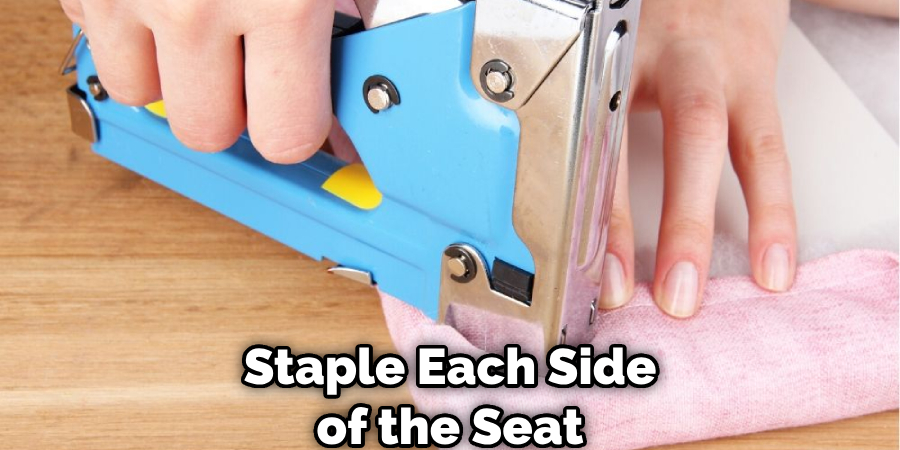
Step 8: Upholstering Rounded Corners
Upholstering rounded corners requires special attention to ensure a professional finish. Here’s how to achieve smooth and seamless corners:
- Pull the fabric tightly around the rounded corner, creating a smooth fold.
- Make small slits in the excess fabric once it’s stapled in place. This allows you to overlap the fabric and staple it down smoothly.
- Use additional staples to secure the fabric, ensuring there is no puckering or bunching.
- Repeat this process for all rounded corners, adjusting the tension of the fabric as needed.
Step 9: Completing the Upholstery
Follow these steps:
- Once all sides are stapled, go back and staple any remaining fabric in the corners, ensuring a neat and secure finish.
- Trim any excess fabric for a clean and polished look.
- Attach a cut-to-size piece of no-fray material to the underside of the seat to conceal the staples and provide a finished appearance.
Step 10: Reassembling the Chair
Follow these steps:
- Align the screw holes on the seat with the corresponding holes on the chair frame.
- Use a screwdriver or drill to reattach the seat to the frame, securely fastening it in place.
- Ensure that all screws are tightened and the seat is stable.
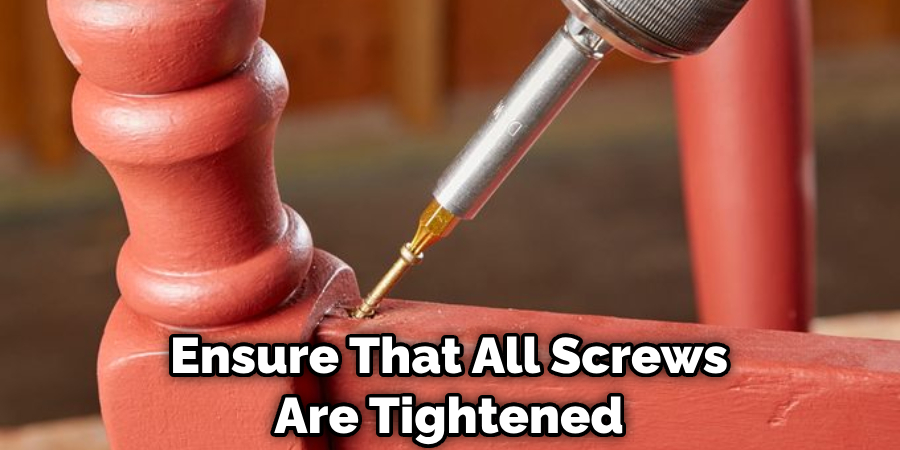
Step 11: Enjoying Your Newly Upholstered Dining Chairs
Congratulations! You have successfully reupholstered your dining chairs. Admire your handiwork and enjoy the refreshed look they bring to your dining space. Sit back, relax, and appreciate the personal touch you’ve added to your home decor.
You Can Check It Out to Reupholster a Leather Chair.
FAQs About How to Reupholster a Chair Seat With Rounded Corners
What Material Can I Use to Reupholster a Chair?
When it comes to reupholstering a chair, there are numerous materials you can choose from. The most common options include fabric, leather, vinyl, and microfiber. Fabric offers a wide range of patterns, colors, and textures, making it a versatile choice. Leather is durable and gives a luxurious look, but it can be more expensive. Vinyl is a budget-friendly alternative to leather, and it is easy to clean. Microfiber is stain-resistant and soft, making it ideal for chairs that are subjected to heavy use. Ultimately, the choice of material depends on your personal preferences, budget, and the intended use of the chair.
What Materials Do I Need to Reupholster a Chair?
To reupholster a chair, you will need materials such as upholstery fabric, high-density foam, bonded Dacron, and various tools. When it comes to upholstery fabric, options include fabric, leather, vinyl, and microfiber, each with its benefits and considerations. The choice of material depends on personal preferences, budget, and the intended use of the chair.
What Tool is Used for Corners in Sewing?
The tool commonly used for making corners in sewing is called a point turner. It is a handy tool that helps in turning fabric corners neatly and accurately. The point turner is often made of plastic or wood and has a pointed end that allows for precise corner shaping. It is an essential tool for sewing enthusiasts and is used to create crisp and professional-looking corners in various sewing projects.
Conclusion
By following this step-by-step guide, you can confidently reupholster dining chairs with rounded corner seats. With a little time and effort, you can transform your chairs and create a stylish and inviting dining area. So, roll up your sleeves, gather your supplies, and let the reupholstering adventure begin!


